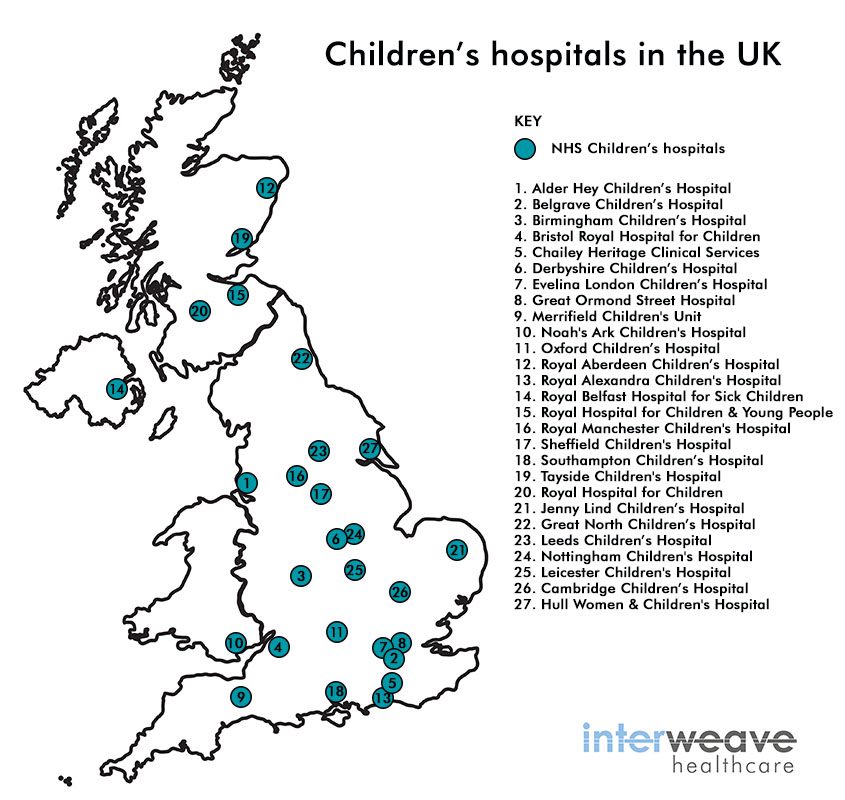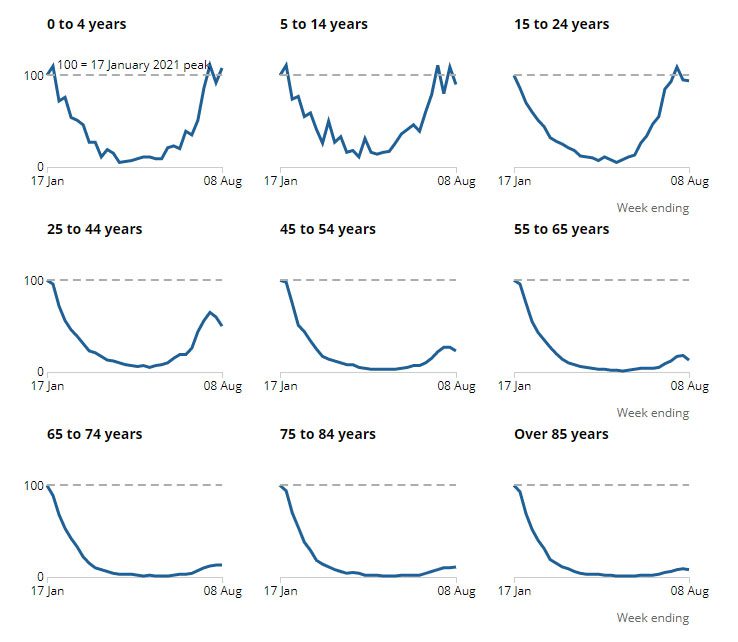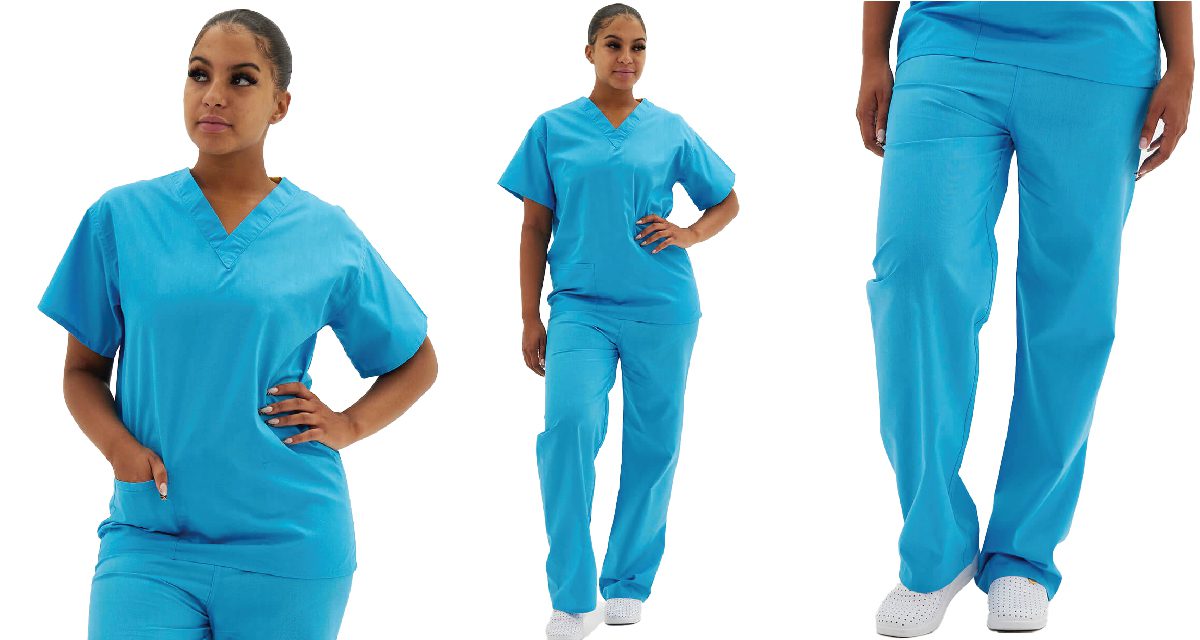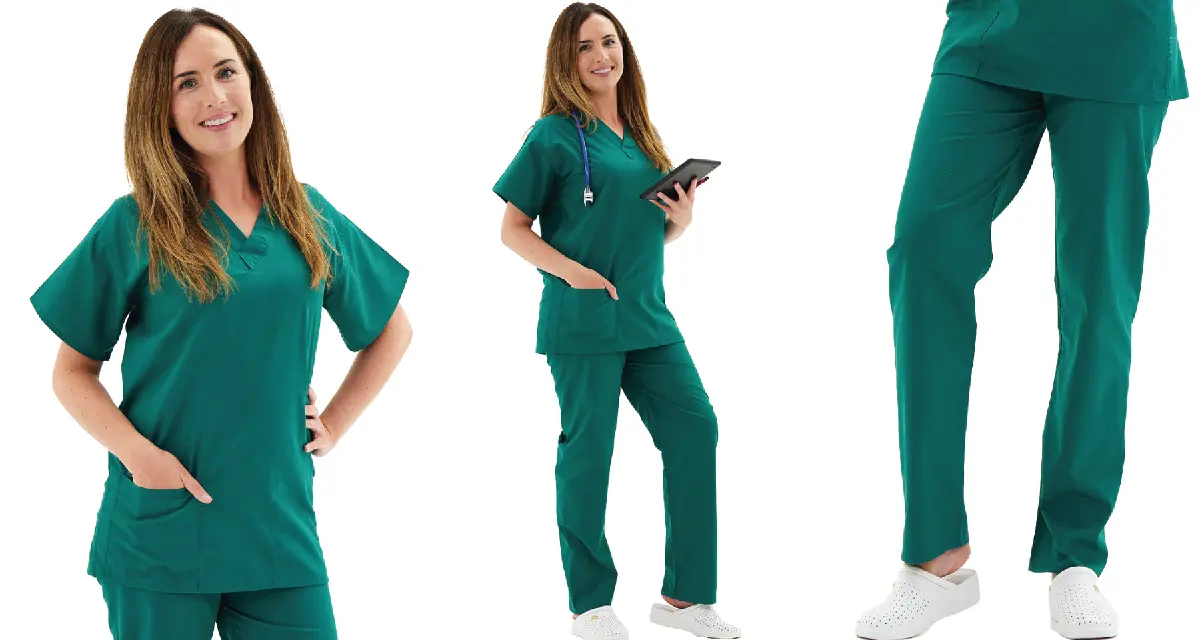Provision of healthcare for children in hospital

Given that in 2021, Britain is the 5th largest national economy in the world when ranked by nominal GDP, it’s surprising to find out that child health and wellbeing is poor compared to other European countries.
The UNICEF report in 2011 ranked the UK as 16th out of 21 OECD countries surveyed for child wellbeing. This report considered health & safety, money, behaviours & risks, education, housing and environment.
In this article we look a bit deeper into one of these factors – the provision of healthcare for children in hospital in the UK.
How many children attend hospital?
According to a report produced by BMC Health Services Research, 56% of all children attended a hospital appointment in the previous 12 months. There was an especially high rate in under 1s.

In addition, 47% of children visit A&E at least once between birth and age 15.
According to new figures, tooth decay remains the number one reason for hospital admission among five to nine year olds. The data shows that 23,500 children had to have hospital treatment for tooth decay in 2020.
You’ll notice the chart above shows that girls aged 15 and over are admitted to hospital at a much higher rate than boys. This is mainly due to cases of pregnancy. However, it also includes cases of digestive system diseases, injury and poisoning.
Where are Britain’s children’s hospitals?
There are currently 27 specialised NHS children’s hospitals spread across the UK, as shown on the map.

The most well-known children’s hospital is Great Ormond Street Hospital in London, commonly referred to as GOSH. The widest range of specialist health services for children are offered at GOSH. This is why young patients across the country are referred there by other hospitals.
Children in hospital during the Covid pandemic
During the first UK national lockdown in 2020, 2.5 times more children attended hospital due to having swallowed a “foreign body” than in the same period a year before. Of these children 66% required serious surgical intervention compared to only 33% during a normal year. The most common “foreign bodies” to have been swallowed were button batteries and small magnets. Potentially this situation occurred due to parents working from home, without any external childcare assistance. Hence, children were left to their own devices for longer periods than would normally be the case.
As the pandemic continued into 2021, the majority of adults had either been vaccinated or had some immunity from prior infection by this stage but the under 15s were still vulnerable. The Delta variant of coronavirus started to infect children at a much higher rate and trigger an increase in Covid-related hospitalisations, as seen in the charts below from Public Health England.
View the charts below which show hospital admissions by age, showing Covid-19 positive hospital admissions in England in August 2021 as a percentage of the rate during the January 2021 peak.

Preparing a child for a hospital stay
Children cope better with a hospital stay if they are forewarned about what’s going to happen. A charity set up in 2015 called What? Why? Children In Hospital (WWCIH) provides helpful advice for parents to share with their children before a hospital visit. They provide a library of online videos showing different types of treatments. The videos feature young patients talking about their experiences, which helps to make the process seem more manageable and aims to calm young patients.
The charity recommends that patients play with toy doctor sets to pretend to be a doctor or a nurse – for example giving injections to their soft toys – this helps to give the child the confidence they need to accept what will happen to them.
NHS Trusts employ Health Play Specialists who work with children to help them cope with procedures or treatments. This often involves playing with soft toys and dolls with the young patients to help the children understand what’s going to happen. Some hospitals even have a “Teddy Bear Hospital” on-site to facilitate this.
Children typically wear hospital patient gowns when they are undergoing procedures. Interweave Healthcare provides baby and child hospital gowns to NHS Trusts for this purpose.


Some parents have purchased child hospital gowns prior to the hospital stay so that the child can play with the gown and get used to wearing it.
Consenting to medical procedures and treatments
If the child is under 16 years old but potentially might be able to make their own decisions about the treatment being offered, then you might hear the nursing staff talking about “Gillick competence”.
What is Gillick competence? If a child is deemed well enough and mature enough to make these decisions, after an assessment by medical staff, they are classed as Gillick competent.
Children over 16 are classed as Gillick competent anyway, therefore medical staff will automatically ask them for their consent for treatment, rather than asking the parents.
Guidance for parents
The NHS provides some guidelines for parents to be able to help their child whilst in hospital. This includes information about giving consent for treatment. It also includes information about parents staying in hospital with their child.
Most importantly, healthcare professionals recommend that parents try to stay calm and appear comfortable with their child’s hospital stay, as this has a positive impact on how the child feels.
 Read more
Read more
How many hospitals are there in the UK
Sources
- http://worldpopulationreview.com/countries/countries-by-gdp/
- https://www.jpeds.com/article/S0022-3476(16)30164-0/fulltext
- https://bmchealthservres.biomedcentral.com/articles/10.1186/s12913-019-3922-7
- https://www.gov.uk/government/statistics/oral-health-survey-of-5-year-old-children-2019
- https://www.ons.gov.uk/peoplepopulationandcommunity/healthandsocialcare/conditionsanddiseases/articles/coronaviruscovid19latestinsights/hospitals
- https://www.whatwhychildreninhospital.org.uk/video-prepare-for-hospital
- https://www.nhs.uk/using-the-nhs/nhs-services/hospitals/staying-in-hospital-as-an-inpatient/



